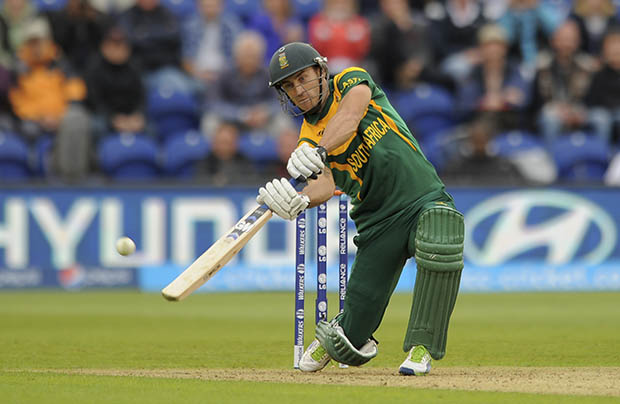South Africa’s easy six-wicket victory over Australia in Harare in early September might come to be seen as one of their more important wins over the men in canary yellow, writes Luke Alfred.
It wasn’t only the manner, but the style, of the win in the final of the triangular series that was important. After confining Australia to a sub-par 217 for nine, South Africa galloped past their total by winning with 55 balls to spare. They might have ordered cocktails and foot-massages while they were at it.
Hostilities between the two will resume on Friday when they face-off again, playing five ODIs around Australia after winning their ODI matches against New Zealand. All of this shows a sensitivity to planning that Cricket South Africa (CSA) haven’t always shown in the past, given that hosting duties in next year’s World Cup in February and March are shared by the same two countries. The national side are covering all their bases, leaving no space for lame excuses come April when the team return home without a small but important piece of silverware in their luggage.
While the victory in sleepy, cricket-starved Zimbabwe was cause for cautious optimism, we should bear in mind that Australia were without David Warner, Michael Clarke and Shane Watson, three of their most experienced and destructive batsmen, for the final. All three are likely to be back for the matches in November, although Watson and Clarke are more injury prone than a kangaroo on crutches. Then again, Clarke on crutches is probably a better player than most of his international contemporaries on legs. Whether we like it or not, Australia will be a serious threat come the business end of the World Cup in March. Playing at the Melbourne Cricket Ground in front of 80 or 90 000 Aussies with a distinct dislike of men in green shirts can be an unnerving experience.
By contrast, South Africa were at full strength through the triangular series, with the exception of Ryan McLaren, who missed the final. The South Africans, then, look settled and well-grooved. The spine of the side – Hashim Amla, AB de Villiers, Faf du Plessis, McLaren, Imran Tahir, Dale Steyn and Morne Morkel – is well-defined and intact and won’t be fiddled with in the months to come. Russell Domingo and his lieutenants will, however, be asking questions about some of the remaining places. This won’t necessarily be probing, they might simply be seeking clarification. Is Quinton de Kock best-placed at the top of the order? Should there be so many lefties in the side? Another question might concern David Miller. The swashbuckling left-hander has seen his confidence disappear quicker than a round of beers at your local pub. Whether Miller can find his mojo in time for the World Cup will be one of the questions of the summer.
Other questions will concern the two ‘Ps’ – Aaron Phangiso and Wayne Parnell. Of the two, Parnell is the more mercurial, liable to either lose it completely with a flurry of wides or no-balls or conjure from nowhere a killer delivery. He’s a marginal call – and an adventurous choice – but he might be the kind of player worth taking a punt on during the World Cup. Things happen when Parnell is playing and it’s more than you can say about some of the more solid citizens in the side.
Unlike Parnell, Phangiso is a known quantity and therefore a safer package. Tahir, with his medicine bag full of wrong-uns and leggies, won’t be displaced as the king spinner. That said, it’s nice to have someone like Phangiso, a late developer and an underrated team man, waiting in the wings should he need to make a quick, unexpected entrance.
On the subject of marginal players, there’s a widespread feeling about that Colin Ingram was probably jettisoned by the national selectors too early. The Warriors player is a classy package. There’s no embarrassment to being humbled by some brutish yorkers, as he was in his last ODI run against Pakistan. Players like Marchant de Lange and even, at a push, Robbie Frylinck should at least be considered. Frylinck is a savvy practitioner, although he’s likely to be considered too much of a flutter in the end.
Invariably, though, World Cups aren’t about the cricket-playing talents of the participating sides – or those alone – they’re about the players’ abilities to withstand the deforming weight of expectation. So often in the past South Africa have taken very good teams to the World Cup. In 1999, for instance, they had a crack side under Hansie Cronje and Bob Woolmer. We all know what happened when Lance Klusener and Allan Donald decided not to have a mid-pitch chat in that agonising semi-final against Australia, a game which South Africa should have won. The Proteas were similarly disappointing in the 2011 tournament, when they played the Black Caps in Bangladesh. New Zealand’s Jesse Ryder and Ross Taylor took them to a barely respectable total which the Proteas couldn’t match. Given all this – and South Africa’s history of World Cup under-achievement when it counts – it is no surprise that there is an elephant in the dressing room. The question is not whether it is there, but, rather, how big is it? Is it a calf, and therefore easily dealt with? Or is it charging around like an adult bull, breaking walls and getting into people’s heads.
The big four – Amla, De Villiers, Du Plessis and Steyn – are the players who will need to answer this question and get the Proteas over the line in Australia. They are big and ugly and experienced enough to know what is required. Playing in Australia before Christmas will be an important passage on their route to bigger things.
This appears in the November issue of TFG’s SportsClub Monthly magazine, published by Highbury Safika Media.
Photo: Backpagepix







